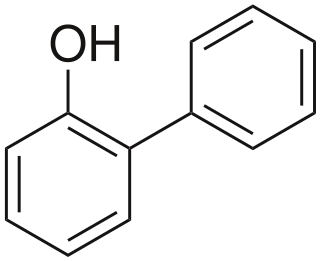 W
WFumigation is a method of pest control that completely fills an area with gaseous pesticides—or fumigants—to suffocate or poison the pests within. It is used to control pests in buildings, soil, grain, and produce, and is also used during processing of goods to be imported or exported to prevent transfer of exotic organisms. This method also affects the structure itself, affecting pests that inhabit the physical structure, such as woodborers and drywood termites.
 W
WCalcium phosphide (CP) is the inorganic compound with the formula Ca3P2. It is one of several phosphides of calcium, being described as the salt-like material composed of Ca2+ and P3−. Other, more exotic calcium phosphides have the formula CaP, CaP3, Ca2P2, and Ca5P8.
 W
W1,2-Dibromo-3-chloropropane, (dibromochloropropane) better known as DBCP, is the organic compound with the formula BrCH(CH2Br)(CH2Cl). It is a dense colorless liquid although commercial samples often appear amber or even brown. It is the active ingredient in the nematicide Nemagon, also known as Fumazone.
 W
W1,2-Dibromoethane, also known as ethylene dibromide (EDB), is an organobromine compound with the chemical formula C2H4Br2. Although trace amounts occur naturally in the ocean, where it is formed probably by algae and kelp, it is mainly synthetic. It is a dense colorless liquid with a faint sweet odor, detectable at 10 ppm, is a widely used and sometimes-controversial fumigant. The combustion of 1,2-dibromoethane produces hydrogen bromide gas that is significantly corrosive.
 W
W1,3-Dichloropropene, sold under diverse trade names, is an organochlorine compound. It is colorless liquid with a sweet smell. It dissolves in water and evaporates easily. It is used mainly in farming as a pesticide, specifically as a preplant fumigant and nematicide. It is widely used in the US and other countries, but is in the process of being phased out in the European Union.
 W
W2-Phenylphenol, or o-phenylphenol, is an organic compound. In terms of structure, it is one of the monohydroxylated isomers of biphenyl. It is a white solid. It is a biocide used as a preservative with E number E231 and under the trade names Dowicide, Torsite, Fungal, Preventol, Nipacide and many others.
 W
WPhosphine (IUPAC name: phosphane) is a colourless, flammable, very toxic gas compound with the chemical formula PH3, classed as a pnictogen hydride. Pure phosphine is odourless, but technical grade samples have a highly unpleasant odour like rotting fish, due to the presence of substituted phosphine and diphosphane (P2H4). With traces of P2H4 present, PH3 is spontaneously flammable in air (pyrophoric), burning with a luminous flame.
 W
WSulfuryl fluoride (also spelled sulphuryl fluoride) is an inorganic compound with the formula SO2F2. It is an easily condensed gas and has properties more similar to sulfur hexafluoride than sulfuryl chloride, being resistant to hydrolysis even up to 150 °C. It is neurotoxic and a potent greenhouse gas, but is widely used as a fumigant insecticide to control termites.